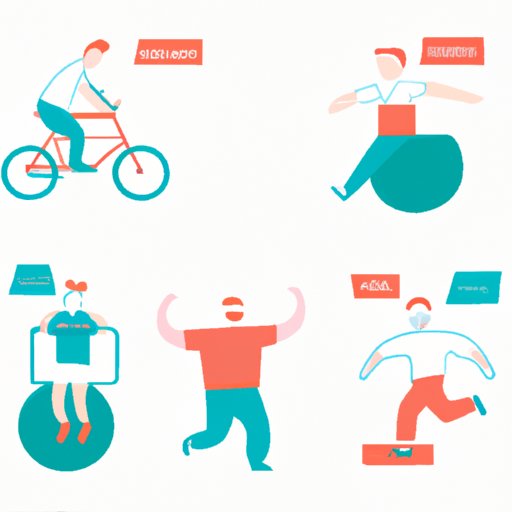Introduction
Physical activity is defined as any bodily movement produced by skeletal muscles that requires energy expenditure. This can include activities such as walking, running, cycling, swimming, and playing sports. The purpose of this article is to explore the various barriers to physical activity and how they can be addressed.

Examining the Physical and Mental Barriers to Exercise
Health conditions can be a major barrier to physical activity. For example, people with chronic pain may find it difficult to exercise due to their condition. Additionally, those who suffer from depression or anxiety may lack the motivation to get up and move. Fear of injury can also be a deterrent, as many people are afraid of getting hurt while exercising.
Time constraints can be another major obstacle to regular exercise. People often have busy schedules and may not have the time to dedicate to physical activity. This can be especially true for those working multiple jobs or caring for young children.

Analyzing Societal Factors that Contribute to Lack of Physical Activity
Pressure from peers can be a major factor when it comes to physical activity. For instance, if a person’s friends are not active, they may be less likely to take part in physical activities. Similarly, social media influences can have an impact on exercise habits. Many people are drawn to the idea of achieving a “perfect body” through exercise, which can lead to unrealistic expectations or unhealthy habits.
The cost of participating in sports and fitness activities can also be a barrier to physical activity. Gym memberships, equipment, and classes can all be expensive and out of reach for some people.
Exploring Health Consequences of Inactivity
A lack of physical activity can lead to a number of serious health issues. Obesity is one of the most common consequences of inactivity. It can increase the risk of developing type 2 diabetes, heart disease, and certain types of cancer. Additionally, those who are inactive are more likely to experience depression and other mental health issues.

Investigating the Impact of Transportation Options on Exercise Habits
Access to public transit can be a major factor in determining whether or not someone exercises regularly. If public transit is limited or unavailable, people may be less likely to engage in physical activities. Car dependency is another major issue, as many people rely on cars as their primary mode of transportation. This can limit their ability to walk or bike to places.
Understanding the Role of Accessibility in Promoting Physical Activity
Having access to parks and trails is essential for getting people to exercise. If these areas are not easily accessible, people may be less likely to take advantage of them. Additionally, the availability of exercise facilities can be a major factor in promoting physical activity. If there are no nearby gyms or fitness centers, people may be less likely to work out.

Assessing the Impact of Technology on Exercise Trends
Technology can have both positive and negative effects on exercise trends. On one hand, the increasing popularity of video games can lead to a decrease in physical activity. On the other hand, technology can also be used to track and monitor physical activity. Social media platforms such as Fitbit and Strava allow users to track their daily exercise and compare their progress with others.
Investigating Financial Limitations as a Barrier to Physical Activity
Financial limitations can be a major barrier to physical activity. Gym memberships can be expensive, and quality sporting equipment can also be costly. Additionally, some activities, such as yoga and Pilates, require specialized training and certifications, which can add to the cost.
Conclusion
In conclusion, there are numerous barriers to physical activity, including health conditions, lack of motivation, fear of injury, societal factors, transportation options, and financial limitations. To overcome these challenges, people should focus on finding activities that they enjoy and setting realistic goals. Additionally, taking advantage of free or low-cost exercise opportunities can help make physical activity more accessible. Finally, making use of technology for tracking progress can provide an extra incentive to stay active.
(Note: Is this article not meeting your expectations? Do you have knowledge or insights to share? Unlock new opportunities and expand your reach by joining our authors team. Click Registration to join us and share your expertise with our readers.)
